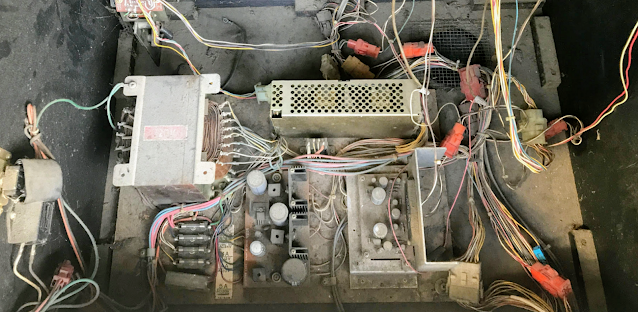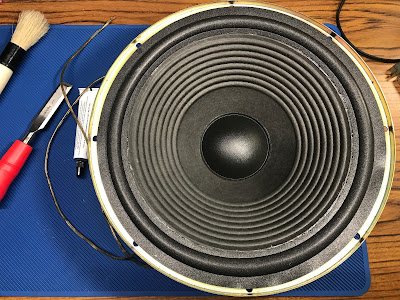Just now making an effort to sort out any remaining issues with this Turbo. While I'm doing minor repairs, I'm also trying to clean the inside of the cabinet, piece-meal, since it's just too big of a job to be done all at once.
Earlier in the week I placed an order for the needed capacitors for the Nanao 20" monitor. So when the parts arrived on Friday, I pulled the monitor and took it outside for a deep cleaning. After discharging the tube with a high-voltage probe, I soaked the tube and chassis down with simple green and used a paint brush to loosen the accumulated dust and grime. This all gets rinsed down heavily with the garden hose, without a sprayer attachment. Finally I rinse all of that down with 90% alcohol, followed up with compressed air.
The monitor was working well enough, with only the occasional wave pattern at the top 1/8 of the screen. Now that the board was visible again, I notice this burned patch in the front right corner:
When I touched the diode at D505 it was moving around freely. After removing and testing the two diodes, resistors, and one transistor at Q504, I found D506, R223, and Q504 were all bad. The emitter leg of Q504 was blown completely away. Here's a closeup of the drawings for that circuit:
This section controls the Horizontal Position, evidently the damage is not bad enough to make the display unacceptable. At this point I have to assume perhaps the diode at D506 developed a cold solder joint, which led to the overheating and eventual failure of the stressed components. That's my theory anyway, so I've placed an order for replacements. Damn, what an ordeal choosing those turned out to be.
For the time being, I continued replacing the capacitors, which for this chassis was pretty simple. During this process, testing the ESR, and capacitance, revealed several were bad, most were considerably out of spec. According to sources, C523 (47uf@50v), located in the high voltage cage, should be replaced with a 100uf@50v, and some suggest replacing the tantalum cap at C408 with a 10uf electrolytic, which I had on-hand. Evidently this tantalum fails frequently, then you end up with vertical collapse. At my age I can't afford vertical collapse, so the cap was replaced.
Once the new caps were installed, I cleaned an insane amount of old flux from the bottom of the board.
Any switches and pots on the board ended up being sprayed with Deoxit, as a preventative measure. I also lightly sprayed the board surface, assuming the mineral oil in the Deoxit can protect the surface from any future problems.
So here it sits, looking very clean now, waiting for those few parts to arrive:
























